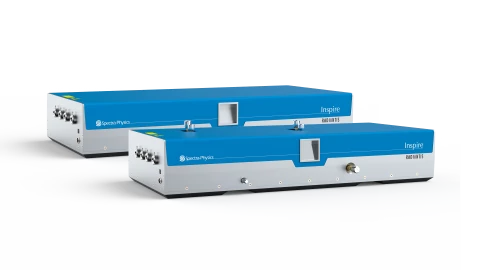Description
Discover the cutting-edge capabilities of the Inspire Femtosecond Optical Parametric Oscillator (OPO) from Radiantis, designed specifically for Ti:Sa Oscillators. This advanced laser system offers a remarkable range of wavelengths, spanning from 345 nm to 2500 nm, providing seamless access to the UV, Visible, and IR spectra. The Inspire is engineered to deliver near-transform-limited pulses with high average power, making it an indispensable tool for scientific research and technological applications.
At the heart of the Inspire's innovation is its patented technology, which allows for gap-free tuning across its extensive spectral range without the need for changing optics. This unique design simplifies the setup process, enabling researchers to focus on their experiments without the hassle of reconfiguration. With its hands-free and automatic versions, the Inspire offers flexibility and ease of use, catering to a wide array of experimental needs. The hands-free model provides fully automated computer-controlled tuning and self-calibration, while the automatic version offers enhanced functionality and adjustable pulse durations.
The Inspire is designed for optimal performance in a laboratory setting, operating efficiently at room temperature and eliminating the need for additional cooling systems or complex setups. This streamlined approach not only enhances the user experience but also ensures reliable and consistent results. Whether you're engaged in time-resolved spectroscopy, single-molecule spectroscopy, or other advanced scientific endeavors, the Inspire Femtosecond OPO is your gateway to precision and innovation in laser technology.
Inspire Femtosecond Optical Parametric Oscillator 345–2500 nm
Specifications
| Repetition Rate: | 80 MHz |
|---|---|
| Total Tuning Range: | 340 – 2500 nm |
| Core Tuning Range: | 340 – 2500 nm |
| Output Power (avg): | 1 W |
| Pulse Duration: | 120 fs |
| Idler Polarization: | Horizontal |
| Signal Polarization: | Horizontal |
Features
- Gap-Free Tuning: Achieve continuous tuning across the UV, Visible, and IR spectrum (345-2500 nm) with a single configuration, eliminating the need for optics changes.
- Automated Control: Benefit from fully-automated, computer-controlled tuning and self-calibration for ease of use.
- Simultaneous Outputs: Access UV, Visible, and IR beams simultaneously through three separate output ports.
- Integrated SHG Unit: Features an integrated Second Harmonic Generation Unit for doubling the un-depleted pump.
- Hands-Free Operation: Available in hands-free (Inspire HF) and automatic (Inspire Auto) versions, offering flexibility and enhanced functionality for various applications.
- No Cooling Required: Operates at room temperature, eliminating the need for ovens, water-cooling units, and pipes inside the OPO cavity.
- High Power Output: Delivers near-transform-limited pulses with high average power across the spectral range, ensuring best-in-class performance.
- Patented Technology: Based on Radiantis' patented technology, providing reliable and innovative solutions for scientific research.
- Flexible Pumping Options: Compatible with Mai Tai® HP Ti:sapphire oscillators, with alternative pump laser options available upon request.
Applications
- Time-Resolved Spectroscopy: Provides ultrafast pulses for dynamic process measurements at femtosecond resolution.
- Single-Molecule Spectroscopy: Enables sensitive detection and analysis of single molecules across broad spectral regions.
- Pump-Probe Experiments: Ideal for investigating ultrafast dynamics in materials and biological systems.
- CARS and Raman Microscopy: Enhances nonlinear imaging techniques with tunable femtosecond pulses.
- Plasmonics: Supports advanced plasmonic studies requiring broad tunability and high peak powers.
Frequently Asked Questions
What is the wavelength range of the Inspire Family Femtosecond Optical Parametric Oscillators?
How many output ports are available in the Inspire Family Femtosecond Optical Parametric Oscillators?
Is the Inspire Family Femtosecond Optical Parametric Oscillators easy to operate?
Does the Inspire Family Femtosecond Optical Parametric Oscillators require external units such as chillers or MRU air recirculators?
What are the applications of the Inspire Family Femtosecond Optical Parametric Oscillators?
Similar Products








Your inquiry has been received.
Create an account by adding a password
Why create an account?
- Auto-complete inquiry forms
- View and manage all your past messages
- Save products to your favorites
- Close your account anytime — no hassle
